Telling Stories with the Body
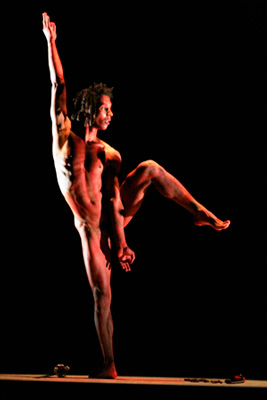
An Interview with Cuban Dancer Yanosky Suarez
By Dariela Aquique
HAVANA TIMES — Dance is one of the oldest and most sublime forms of artistic expression. Today, we will be conversing with Cuban dancer and choreographer Yanosky Suarez.
HT: You’re a self-taught dancer. How is that possible?
YS: Self-taught isn’t exactly the phrase. I simply didn’t finish my studies and have no diplomas, degrees and those sorts of things. I did take dance lessons here and there. I am not a formally trained dancer, I have taught myself to dance and have gone it alone as a professional, without dance companies, choreographers or directors of any kind.
HT: Why did you choose dance as a means of expression?
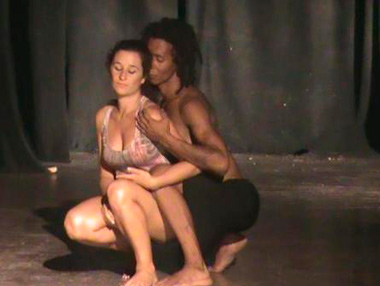
YS: The body offers us many possibilities if we set out to use it as a vehicle for expression, if we establish the kind of communication with it that allows us to tell a story through a succession of movements, through a transition across different emotional states that can be perceived by the audience.
Conveying something about the past, present or future, about love, peace, war and who knows what else, through simple gestures or a chain of physical, virtuous actions, is one dance’s greatest charms for me and its essence, that’s why I chose it.
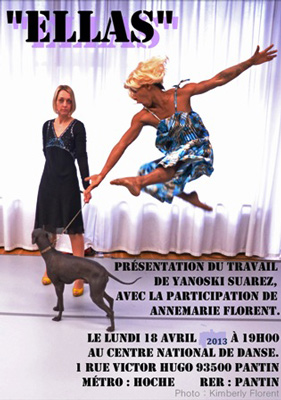
HT: You perform what is referred to as modern or post-modern dance. Why this and not a different genre or style?
YS: Because this genre is, in some way, a different way of tackling a dance performance. It offers you many possibilities in terms of merging different styles and techniques, to experiment with different principles. When you draw from different sources, you become alive with the sap of everything you’ve nourished yourself with, an irrepressible flow of experiences without defined appearances.
That abstract language, free of nihilism, leads to a diversity of readings that can only be achieved through the expressive freedom afforded us by modern or post-modern dance. I don’t mean to offend the other genres, but this breaks with all repressive mechanisms – it goes beyond formal codes and undertakes a more daring search, aimed at a contemporary context that demands this experimentation.
HT: How many years have you been dancing for?
YS: I’ve been dancing my whole life. Professionally, since 2000. It’s already been fourteen years.
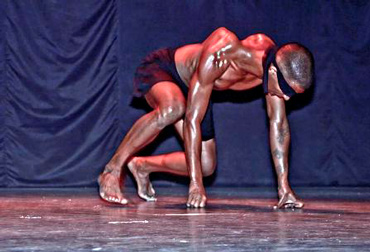
HT: What was it like at the beginning?
YS: As a kid, I wouldn’t stop moving, raising my arms, doing pirouettes. Later, I would imitate dancers I saw on television, repeating their movements. Then I developed a fascination with tai-chi, because I loved those flowing bodily movements. At one point, I took some classical ballet lessons at the Vicentina de la Torre academy. Later, I took a kind of modern dance workshop-course. That’s where it all began, I was sure that was what I wanted to do my entire life.
HT: Your career has been rather peculiar. You have oscillated between working with institutions and dancing in a wholly independent fashion. Tell us about this.
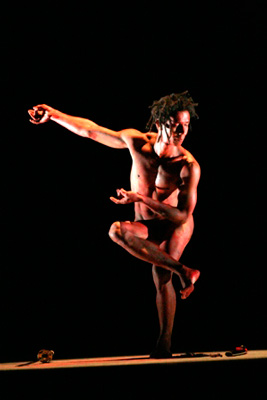
YS: You know what it means to be part of an institution: auditions, tests, salaries. I’ve had to join some groups because of this, to be able to have a salary, and so that my pieces can be staged somewhere and promoted.
As a choreographer, I’ve worked a lot with theater directors, training actors in bodily expression. I’ve liked and learned a lot from the experience of working in theater. I’ve also worked with dance companies, circus performers, performance artists, people who stage happenings or practice body art. But I’ve always retained a fair degree of freedom, and this has allowed me to create with having to follow the aesthetic criteria of the groups and projects I’ve been involved with.
HT: Doing things independently, without any kind of institutional links, has this brought you any problems from the bureaucratic point of view?
YS: Yes, many. You can’t stage a performance anywhere if people don’t offer you a venue, if you’re not “inside.” I’ve felt a little bit like an outcast on occasion. Luckily, there has always been people who believe in me and have called me to go work with them, and that’s made things easier.
HT: You got a fellowship abroad. Can you tell us about this?
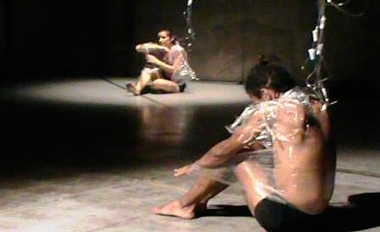
YS: I was granted a fellowship by the National Dance Institute of Paris after winning the Biennial Caribbean Dance Competition held in Havana in 2010. It was a beautiful and gratifying experience.
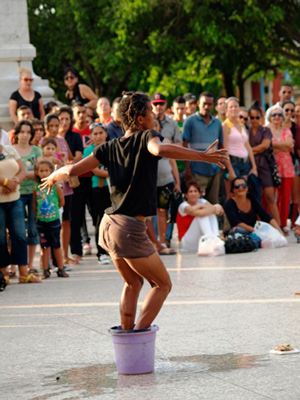
HT: What new projects are you involved in?
YS: Right now, I’m rehearsing for a festival in Spain to be held in September. Sorry, but I don’t remember the name right now (laughs). I want to stage two of my pieces, Geisha and S/T. They’re both solo pieces I choreographed.
HT: You’ve travelled and continue to travel abroad a lot, but you always return to Cuba and Santiago de Cuba. Why?
YS: I haven’t travelled that much. I’ve been to Martinica, Guadaloupe and France. I always come back because I like Cuba a lot, and because I am a man of Santiago through and through, even though I wasn’t born here. This city is like a huge creative workshop for me. Its people, their social problems, are my raw materials. I like addressing the experiences of human beings, their environment, their feelings and everything having to do with their lives, in my work. People are my models. I tell stories with the body, and here’s where I find my inspiration.
